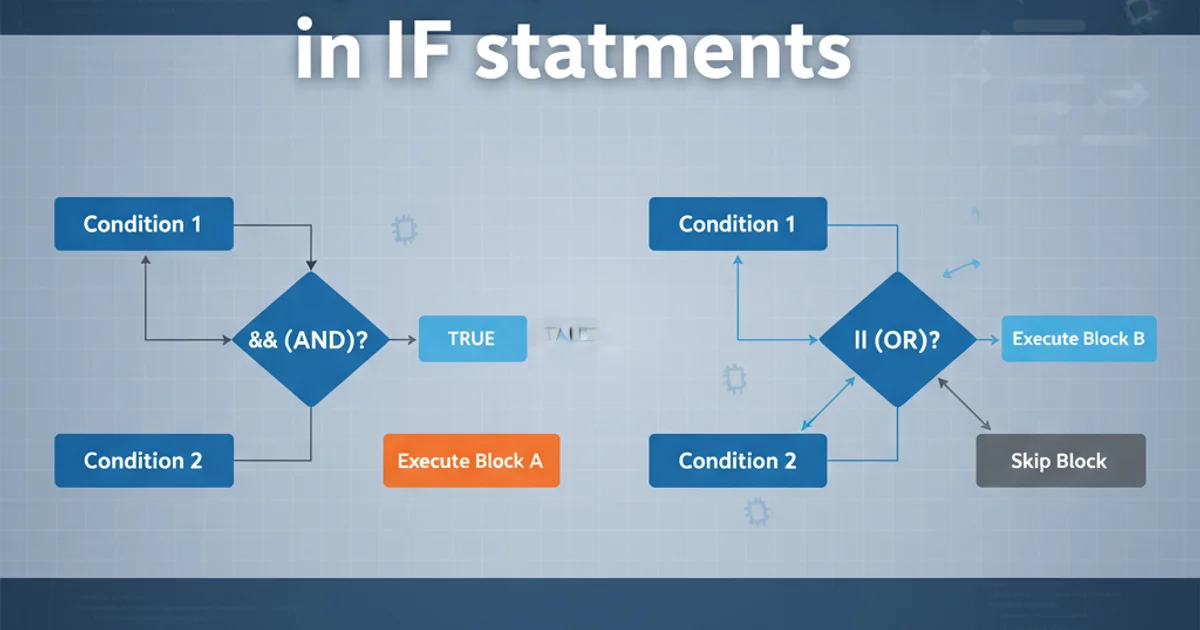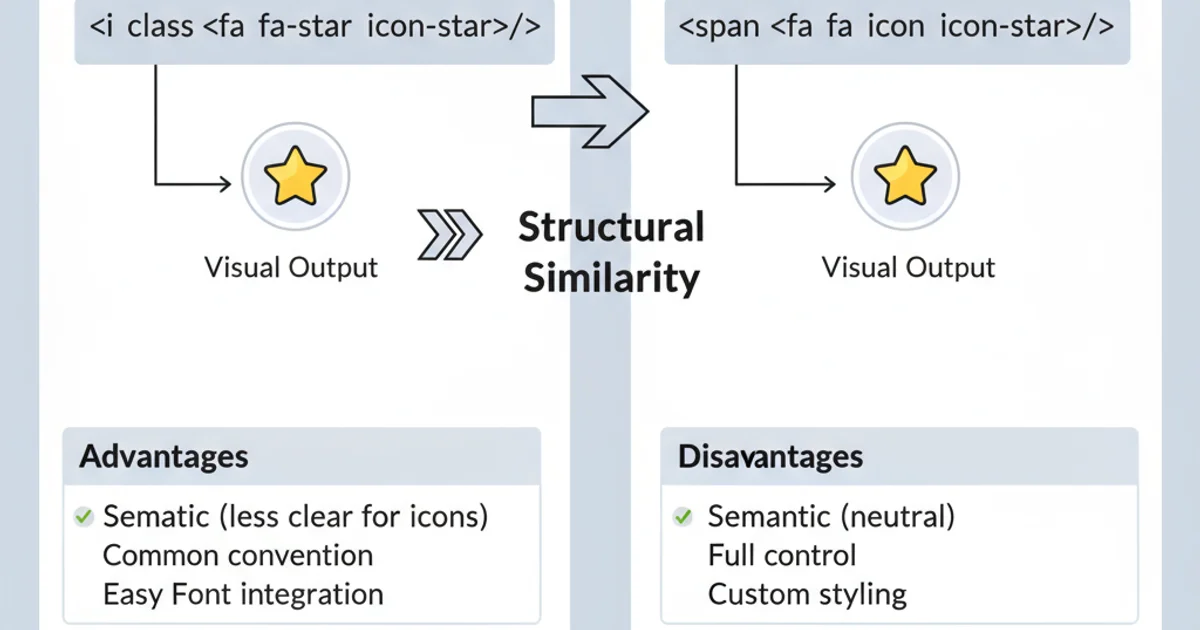What are the advantages/disadvantages of using the <i> tag for icons instead of <span>?
Categories:
i vs. span for Icons: A Semantic and Practical Comparison

Explore the advantages and disadvantages of using the <i> tag versus the <span> tag for displaying icons in HTML, focusing on semantic meaning, accessibility, and common practices.
When integrating icons into web pages, developers often face a choice between using the <i> (italic) tag or the <span> (generic inline container) tag. While both can technically render an icon, their semantic implications, accessibility considerations, and practical advantages differ significantly. This article delves into these differences to help you make an informed decision for your projects.
The Semantic Argument: What Do These Tags Mean?
The core of this debate lies in the semantic meaning of each HTML tag. HTML5 introduced clearer semantic definitions, aiming to make web content more understandable for both browsers and assistive technologies. Understanding these definitions is crucial for writing accessible and maintainable code.
The <i> tag, historically used for italicizing text, was redefined in HTML5 to represent 'a span of text in an alternate voice or mood, or otherwise offset from the normal prose in a manner indicating a different quality of text, such as a taxonomic designation, a technical term, an idiomatic phrase from another language, a thought, or a ship name.' While this definition is broad, it generally implies content that has a specific semantic meaning within the text, but is not necessarily more important. For icons, this interpretation is often stretched to mean 'an iconographic representation' that is distinct from the surrounding text.
The <span> tag, on the other hand, is a generic inline container. It has no semantic meaning on its own and is used primarily for styling purposes with CSS, or for scripting with JavaScript. When you need to apply styles or manipulate a small portion of text or an inline element without conveying any specific meaning, <span> is the go-to choice.
flowchart TD
A[Icon Implementation Choice] --> B{Semantic Meaning?}
B -- Yes --> C[Does icon represent 'alternate voice' or 'idiomatic phrase'?]
C -- Yes (Historical/Icon Font) --> D["<i> Tag (with ARIA for accessibility)"]
C -- No --> E["<span> Tag (preferred for generic styling)"]
B -- No --> EDecision flow for choosing between <i> and <span> for icons.
Accessibility Considerations
Accessibility is paramount in modern web development. Screen readers and other assistive technologies rely on semantic HTML to interpret content for users with disabilities. The choice between <i> and <span> can have a direct impact on how icons are perceived by these tools.
When an icon is purely decorative and adds no essential information, it should be hidden from screen readers. This is typically achieved using aria-hidden="true". If an icon conveys meaning, that meaning must be provided to assistive technologies, usually through aria-label or by visually hidden text.
<i> or <span>, always ensure your icons are accessible. Decorative icons should have aria-hidden="true", while meaningful icons require an accessible name via aria-label or visually hidden text.Practical Advantages and Disadvantages
Beyond semantics and accessibility, there are practical aspects to consider, especially concerning styling, browser compatibility, and common library practices.
Many popular icon libraries, such as Font Awesome, historically recommended and continue to use the <i> tag for their icons. This practice originated because <i> is an inline element and often had minimal default styling, making it a convenient container for icon fonts. This has led to a widespread convention, making <i> a familiar choice for many developers.

Comparison of <i> vs. <span> for icon implementation.
However, using <span> for icons is arguably more semantically neutral and flexible. Since <span> carries no inherent meaning, it avoids any potential confusion with the <i> tag's redefined purpose. It also allows for clearer separation of concerns: <span> for generic styling, and other semantic tags for their intended content.
Code Examples: Implementing Icons
Let's look at how icons are typically implemented using both <i> and <span> tags, along with best practices for accessibility.
Using for a decorative icon
This is a decorative icon:
Using for a decorative icon
This is a decorative icon:
Using for a meaningful icon
Using for a meaningful icon
In all these examples, the aria-hidden="true" attribute is crucial for preventing screen readers from announcing the icon itself, which would be redundant or confusing. For meaningful icons, the aria-label on the parent element (like <a> or <button>) provides the necessary context.